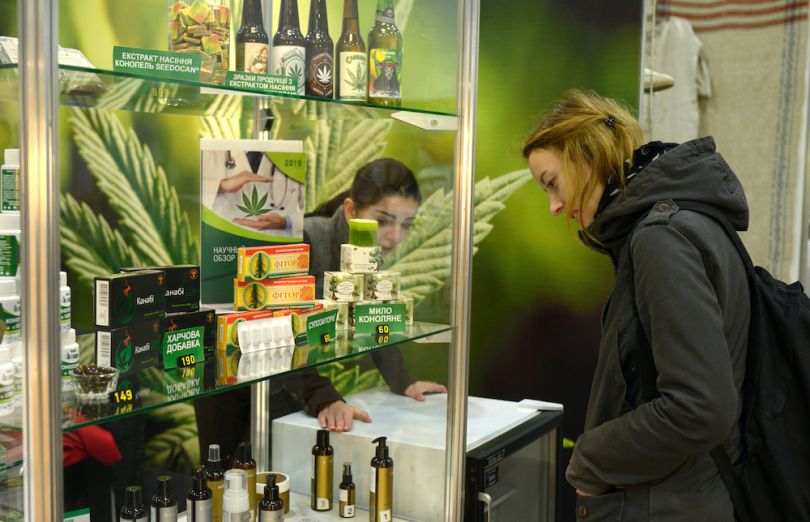Up until recently, cannabis brands have had little reason to market their products to anyone other than the stereotypical cannabis enthusiast. Now, as recreational use of marijuana is legal in 15 states and tilting toward mainstream acceptance, brands are adjusting their marketing strategies to reach new and more diverse segments of consumers.
Lisa Buffo, the founder and chief executive officer of the Cannabis Marketing Association, said lately she’s noticed brands “getting more niche with their unique selling propositions,” targeting the “canna-curious” crowd, composed mostly of women and Baby Boomers, which she estimates are two of the fastest-growing customer segments.
That’s a stark contrast to five years ago, when, according to Buffo, cannabis brands almost exclusively targeted men in their twenties.

Could Cannabis Be the New Cabernet?
Perceptions around cannabis — and the populations in which marketers see new demand — are quickly changing.
“There’s this trend of replacing the glass of wine with a joint at the end of the day, to take the edge off,” Buffo said of the emerging population of women who are trying CBD and cannabis products for the first time. “I think we’re seeing it get even more specific and targeted within that group as well.”
Buffo has seen some brands go through complete overhauls of their look and feel, or launch entirely from scratch, in order to appeal to a wider range of consumers — women and the wellness crowd, especially.
“There’s this trend of replacing the glass of wine with a joint at the end of the day.”
Peiti Feng, chief marketing officer at MyRemede, a CBD brand, told Built In that, as the cannabis market matures and the science becomes more widely understood, brands will focus on talking to “the crowd that has more health concerns or wellness needs, versus just looking for the intoxicating impact of cannabis.”
Feng identified “soccer moms” as a prime target for cannabis marketers. In her view, they represent not just a generation of women who are looking for new modes of self care — they are also often the ones tasked with caring for their aging parents. Turns out, those aging parents are getting into cannabis too.
“The senior crowd is, in my opinion, the largest source of growth,” she added. “However, that is also the hardest one to market to, because they’re not necessarily online.”
Their middle-aged children are, however.
Cannabis Marketing Still Poses Legal Questions
Feng expects social media influencers to play an increasingly prominent role in reaching these emerging canna-curious populations, as they can use their platforms to get the word out about all the products available.
But even as most marketers enjoy the ability to reach an ever-widening customer base, marketing cannabis products remains as tricky as ever.
Although 15 states, plus the District of Columbia, have declared recreational marijuana use legal — not to mention the several others that have approved it for medicinal purposes — the federal government still considers cannabis very much illegal (at least for now). That’s enough for tech behemoths Facebook and Google to disallow cannabis companies from marketing products on their platforms.
And since shipping cannabis across state lines is akin to drug trafficking in the eyes of the federal government, the e-commerce playbook is off the table for THC-infused products.
How, then, do cannabis brands reach consumers? Mostly the old-fashioned way: Conversation.
Pre-pandemic, Buffo said, the most effective way for cannabis brands to differentiate themselves and drive awareness in the minds of consumers was through education. Specifically, they would build relationships with budtenders — the folks behind the glass counters at physical retail stores — arming them with knowledge about their products that they could then pass on to customers.
Cannabis dispensaries are one of the few remaining retail environments where consumers are typically not allowed to pick up the product and read the label for themselves. Therefore, there almost always has to be a conversation at the point of sale.
“Becoming a content resource, educational hub, is pretty foundational for most brands.”
These brands would also invest heavily in experiential marketing, establishing one-to-one connections with curious consumers through installations and events.
Since the science and application of cannabis is still so novel for many consumers — and the stigma is still being shaken off — a large percentage of them are looking for brands to help them understand the product ingredients and what they can do for them.
“Becoming a content resource, educational hub, is pretty foundational for most brands,” Buffo said. “Every company has to almost become a media company.”
Virtual Events Have Come to Cannabis Marketing Too
Without being able to foster face-to-face interactions, some cannabis brands have resorted to virtual events.
“I’ve seen brands get really creative,” Buffo said. She recently participated in a virtual taste test with a CBD brand that sent participants a shipment of products, which they walked attendants through via a group Zoom call.
And with social distancing measures in place, brands are working more to connect personally with their customers through relationship-building via social, email and text message marketing, Buffo added.
Ultimately, the importance of word-of-mouth marketing still reigns supreme.
“From my experience, people talk to their friends, neighbors or family members first.... Whatever you’re told to do, that is usually the first touch point,” Feng said.
CBD brands like MyRemede, where Feng works, enjoy more lax advertising regulations than their THC counterparts — and they are allowed to sell and ship their products through online storefronts — but digital advertising is still a legal rigamarole for them too.
Brands in this space can’t present their products as having medical benefits in their ads, for example; more research is needed to back such claims up. So they are limited in what they can say (or risk being booted from the platforms).
“You’re really leaving it up to the consumer to decide and do their own research,” she added. “And the conversion process ... is a lot longer, and a lot more expensive, if you want to play the game correctly.”
That means arming consumers with as many educational resources as possible. Doing so helps establish brands as authorities in the space where so many entrants are new that brand loyalty, so far, factors in very little to purchasing decisions.
Players in the CBD space also typically count on a robust affiliate marketing programs, taking advantage of the efficacy of word-of-mouth marketing.
The women’s-focused CBD brand House of Wise, for example, launched last month with an aggressive affiliate program. The landing page teases, “Join a community of powerful women and make money on your own schedule.”
Leading Players Seek to Reboot the Narrative
Some brands are hoping that, if they keep exhibiting good behavior, internet platforms will eventually get comfortable enough to open up their channels and let them run ads.
Cresco Labs, a major cannabis company, recently published a proposal for marketing and advertising standards that it’s encouraging others in the industry to adopt.
“How we represent ourselves as an industry at this moment will set a tone for the future,” wrote CEO Charlie Bachtell in the proposal’s introductory remarks, adding, “This effort is part of setting that proper tone and we encourage all operators to join us in following these marketing and advertising standards as we build a responsible cannabis industry together.”
Among the standards is a commitment to create ads that avoid featuring people who appear impaired or intoxicated due to cannabis consumption, or that are designed to appeal to underage consumers, or that make exaggerated health claims.
Cresco is hoping that by rallying around a set of strict protocols, some long-standing stigma will be taken out of the industry, normalizing a product that has long been demonized by regulators and public officials. Maybe then, the logic goes, media inventory will be more welcoming of their ads.
For the time being, cannabis brands will have to stay agile and creative. At least until the smoke clears.




